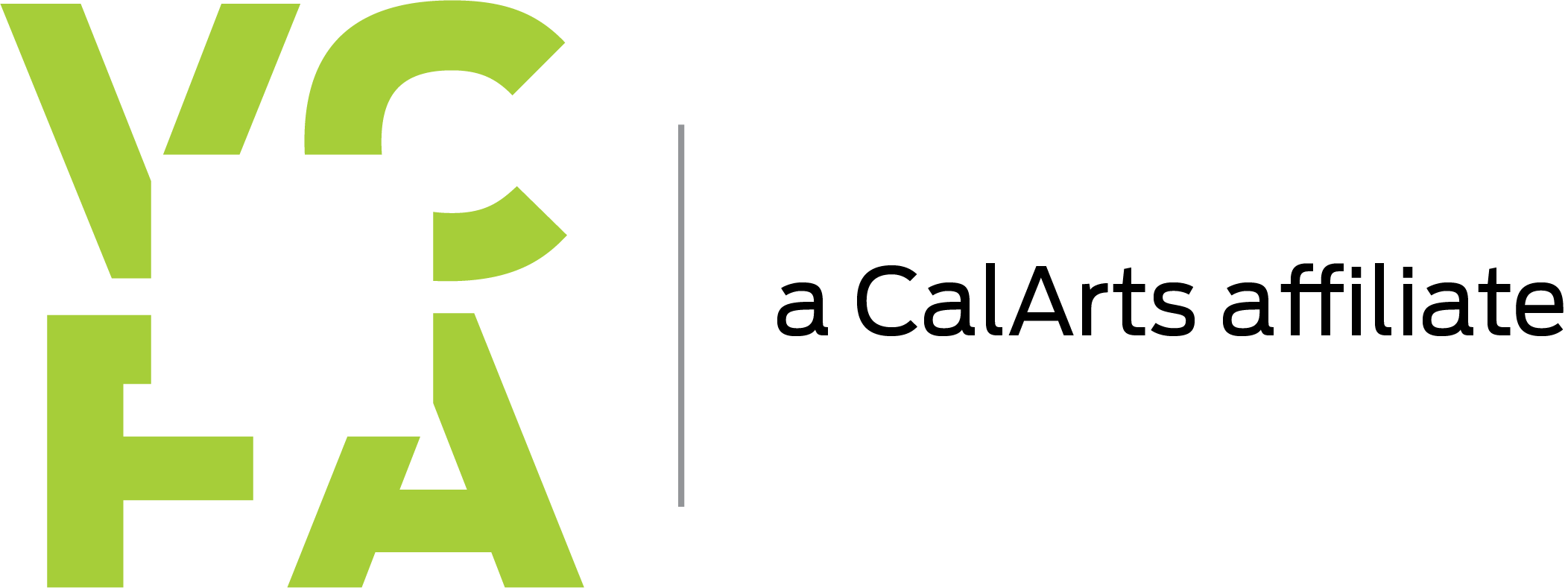Joeann Argue, 2013 MFA in Visual Art
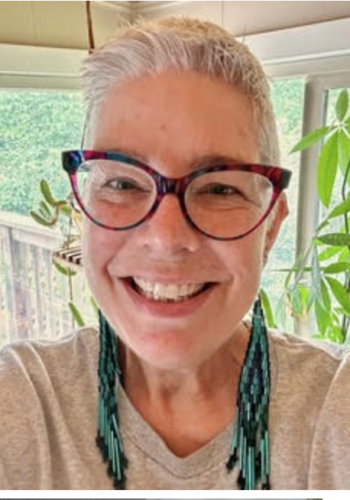 In the spring of 2023, VCFA spoke to Visual Art Alumnx Joeann Argue (VA ‘13) about her involvement in the creation of the Nogojiwanong Indigenous Fringe Festival (NIFF) in Nogojiwanong/Peterborough Ontario, Canada.
In the spring of 2023, VCFA spoke to Visual Art Alumnx Joeann Argue (VA ‘13) about her involvement in the creation of the Nogojiwanong Indigenous Fringe Festival (NIFF) in Nogojiwanong/Peterborough Ontario, Canada.
As an Indigenous Canadian educator, storyteller, singer, and sculptor, Argue has had an expansive history in performance and uplifting communities of artists. As Argue says herself, “I think that art, in one form or another, has always been a part of my life. I don’t remember a time when I wasn’t creating something—be that visual art, craft, music, or writing.” Argue teaches at Trent University in both the Chanie Wenjack School for Indigenous Studies and the Frost Centre for Canadian and Indigenous Studies. Trent University was the first university in Canada to establish a department dedicated to Indigenous study. In her own study, Argue worked for fifteen years under the mentorship of Muriel Miguel from the renowned Spiderwoman Theater in New York City. As written in their mission statement, Spiderwoman Theater “offer[s] theater training and education rooted in an urban Indigenous performance practice.” Finally, Argue is a founding member of Unity, a group of four women who perform Indigenous music (traditional and original) and have been performing together for almost 20 years. For the past few years, her knowledge and passions have been used to help launch and champion NIFF.
Read our Q&A below to learn more about how Argue helped found NIFF. In 2023, the festival will take place from June 21st to the 25th. You can find more information about attending the festival at indigenousfringefest.ca.
The Q&A
Q: Music and storytelling have been strong themes in your work/educational work. What empassions you to work in these areas, and can you speak to the importance of the persistence, practice, and preservation of these areas of study/art?
A: I love stories, no matter how they are told, and music has always been a part of my life. I grew up in a house where music was always playing. My mother loved blues and jazz, particularly the women singers, and my father was a diehard country music fan. I was involved in school music programs early on and played a variety of instruments. I was a terrible music student though. Once I learned how to read music, I just wanted to play around with the instruments. I didn’t want to practice the same thing over and over. Lessons, for me, never lasted long. I loved to sing and to write music but I was a very shy person and didn’t like to perform in public. When I got involved with theatre, I stuck to the backstage roles. At the time, I didn’t really care who was telling the stories as long as I got to be part of the process. That all changed when I discovered Indigenous performance. Culture was not part of my life until quite late. When I discovered this whole new world, and met wonderful teachers and mentors, it shifted that shyness and I wanted to be part of it all, rather than hiding in the shadows. I think my students now probably wish I would stop talking and telling stories sometimes! When I work with students around Indigenous story and music, the one lesson I try to instill is that these are not practices and traditions from some mythical past but rather practices that are happening right now, that are relevant right now. We continue to tell, to sing, to dance, not to preserve a shadow of some old way of life but because the teachings, the stories are just as important now as they were before. We humans need constant reminding of what’s important and that’s what these practices do; they remind us to take care, to give thanks, to honour.
Q: Let’s talk about NIFF. First, to give clarity to our readers, what is the Nogojiwanong Indigenous Fringe Festival? What kinds of work does it showcase, who is involved, and when and where does it take place?
A: The Nogojiwanong Indigenous Fringe Festival (NIFF) is the first Indigenous Fringe Festival in the world! Indigenous performance of all genres is part of the festival: theatre, stand-up comedy, music, dance, and even burlesque make up the festival schedule. It falls within the traditional Fringe model, so performers are chosen by lottery and there is no curation of shows. We have both indoor and outdoor venues, and the festival currently takes place on the grounds of Trent University in Nogojiwanong/Peterborough, ON. This year our dates are June 21st to the 25th. We begin the Festival on Indigenous Peoples Day, June 21st, and we have a family day on June 24th with additional programming outside our Fringe schedule. Each artist or artist group is scheduled for five performances over the course of the festival and this year we have a mix of plays, music, and dance. A number of nations are represented and we have performers coming from across Canada.
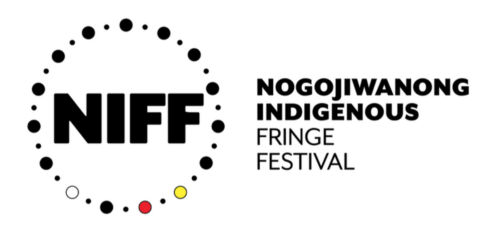
Q: We understand that you are a founder of the festival, and an Artistic Director. We’d love to learn more about how the festival began. What inspired you and your co-creators to start and champion this festival?
A: NIFF began with a midnight tweet from Anishnaabe playwright Drew Hayden Taylor. Drew is from Curve Lake First Nation, which is just north of Peterborough and has strong ties to Trent University. Drew wondered why there wasn’t an Indigenous Fringe Festival, and there was a lot of lively discussion about how great that would be. Trent happens to be home to the only theatre dedicated to Indigenous performance at an institution in North America—Nozhem: First Peoples Indigenous Performance Space—and I tweeted that the theatre sits empty for much of the summer. People seemed keen on the idea and I mentioned it to my colleague, Lee Bolton, who coordinates Nozhem. It turned out that she has extensive Fringe experience as both a performer and organizer. From there, the idea just took off. We wrote grants and brought on senior Indigenous mentors and just over six months later we had our lottery winners and were on track for the first ever festival. Two months later the world went into lockdown with COVID. It was quite devastating. Fortunately, our funders and our mentors were fully behind us and we rolled our plans over to 2021. As you might imagine, starting a festival in the middle of a worldwide pandemic comes with multiple challenges. There have been lots of shifts and last minute changes as we’ve negotiated things like artists’ ability to travel, public health protocols, and audiences’ willingness to be in crowded spaces. In fact, our first festival in 2021 became a drive-in when public health informed us that we couldn’t have more than 10 people in one place, including performers! That was just a few days before the festival opened, but our intrepid crew built a small stage in a large parking lot, rented an FM transmission system, and invited everyone to attend in their cars! It was quite the experience for all of us but especially for the performers, who couldn’t really see their audience and had to adjust to horn honking instead of clapping or laughter.
Through it all, it’s been exciting to host a wide variety of Indigenous performance, and to bring it to audiences who might not be familiar with just what is happening in Indigenous performance country. We hold space for Indigenous people to tell their stories, whatever those stories might be. Stories could be traditional, but just as often they are contemporary and, perhaps, unlike anything seen before.
Q: The festival holds space for skill development, mentorships, and workshops, and emphasizes that “NIFF is committed to providing a space for people to experience and embrace the arts and community with an extensive commitment to the development and transmittal of cultural knowledge and creative practice.” Can you speak to the key learning, mentoring, and knowledge sharing opportunities built into the festival—and why they are so invaluable?
A: In our research for the festival we found that Indigenous performers rarely participate in any kind of Fringe Festival. While we’re still working out why that is, we wanted to ensure we created a safe space of learning and practicing for those who might be interested but unsure how to move forward with their work and to encourage them to apply to the Fringe Festival circuit. Fringe is quite a different performance festival model. Not only are performers chosen by lottery but 100% of the box office goes to the artists. Artists are responsible for their own publicity as well, so the more people you can reach out to, the more money you will make from tickets. That can be an intimidating prospect for new artists. Artists might also be new to lighting and sound, to outdoor venues, even to developing their idea into a show, so for all of these areas we provide workshops with longtime professionals in each field to give advice and encourage new and returning performers. We also have three senior Indigenous artists mentors who attend the festival shows and will meet one on one with artists, both before the festival begins and after seeing a show or two. Our mentors are Drew Hayden Taylor, the founding tweeter, and Muriel Miguel and Deborah Ratelle from Spiderwoman Theater in New York City. Muriel and Deborah have been part of the Indigenous performance program development at Trent since its beginning in 2004 so they were keen to be involved with NIFF as well. The opportunity to learn and receive feedback from senior artists is invaluable in part because it can be so hard to access. We provide online access to workshops and the workshops are free because, well, artists rarely have any money to spare. We want our festival to be as barrier-free as possible for Indigenous artists.
Q: How have you seen the festival impact the community of artists involved with it?
A: Artists are always looking for new ways to tell their stories and new audiences to tell them to, as well. NIFF has inspired some of our artists to try new forms of performance. For example, one of our artists brought her stand-up comedy show the first year and returned the next year as part of a burlesque troupe. Others tell us they’ve gained greater confidence in telling their stories and applying to other festivals. One even became an artist in residence at another festival. New artists are applying every year so word is spreading that this is a good place to learn and to hone one’s craft.
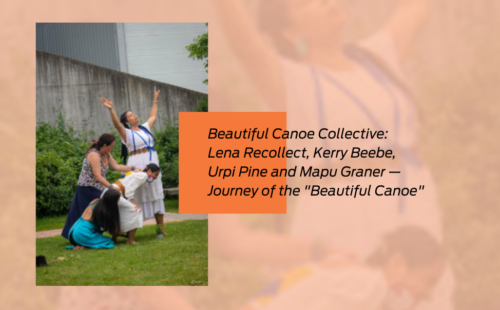
Q: How has the festival impacted you?
I have learned so much about running a festival and about what it takes to create and hold safe space for artists. But truly the biggest impact for me is watching artists blossom and grow as the festival goes on. I love to hear the stories they bring and to see the way they bring them to life. It’s encouraged me as well, to start to uncover new ways of telling stories I want to tell. Each artist inspires me to be better.
Q: Looking into the future, what’s something you are looking forward to as the festival continues to grow and expand? Looking into the past, what is one of your favorite festival memories?
As we move into the future, we are hoping that we can bring some of the artists out to the neighbouring First Nations communities to offer workshops and encouragement to local folks who might want to tell their own stories. We see the festival as an incubator of Indigenous storytelling so the more folks we can involve in the workshop process, the better. We would love to have a portion of the festival dedicated to local performers.
There are so many I could choose but I think one of my favourites is seeing the face of stand-up comic DB McLeod as row upon row of cars gave her a honking ovation at the end of her first set during drive-in NIFF. I don’t think that’s an experience any of us will forget soon.
Q: How can interested readers learn more about and support the festival?
A: If you’re in the Nogojiwanong/Peterborough area from June 21st to the 25th, come on out!! You can find artist info, scheduling and ticket links at our website: indigenousfringefest.ca. And if you’re an Indigenous performer (Yep, we encourage international artists. The border crossed us after all!), please keep an eye on our website for lottery info. The lottery usually opens in early November. You can also find us on Facebook, Instagram and Twitter, and you can sign up for our monthly newsletter on our website. You can find a lovely video from last year’s NIFF that highlights the shows and the experience on our site as well. We would love to see you come out and support all our wonderful artists!
Gchi-miigwech VCFA for showcasing NIFF!
